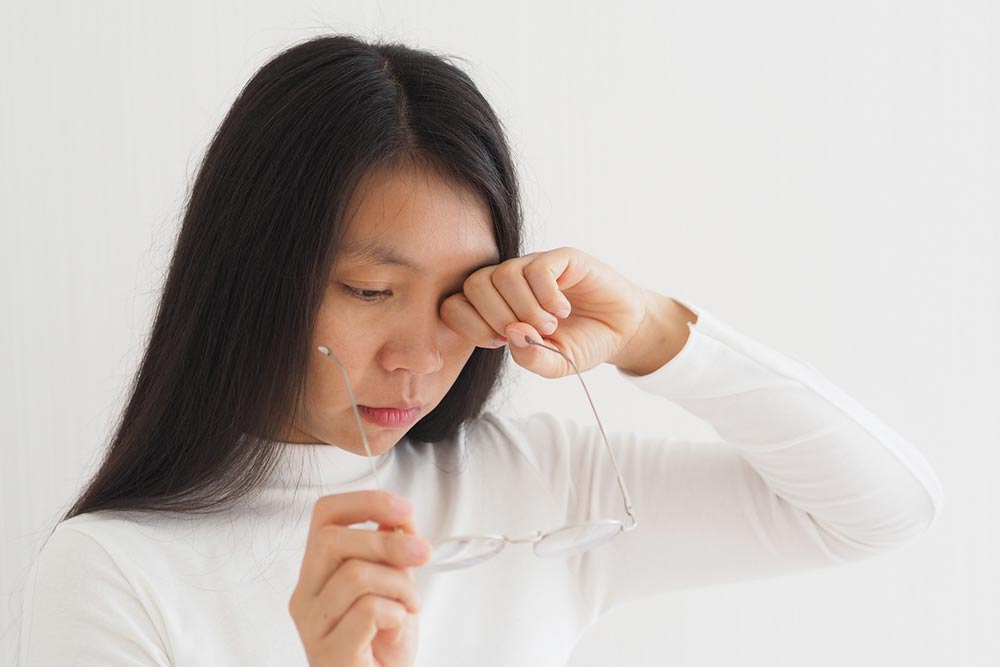6 common signs of macular degeneration

Macular degeneration is a type of eye disease that is often associated with aging. So, it primarily affects those over the age of 50, interfering with their central vision in one or both eyes. The condition can be managed and slowed down if one gets diagnosed in time. Here, addressing unusual changes in vision and getting regular eye checkups can help. Further, the following signs of macular degeneration should prompt one to seek medical intervention:
1. Blurred vision
After the age of 50, one may begin experiencing blurred vision, which could be a sign of age-related macular degeneration. Even though macular degeneration does not always come with warning signs, persistently blurred vision should prompt one to get a complete eye examination. The symptom could be observed in one or both eyes. Here, the damage to the macula—a region in the center of the retina—can make things right in front of the eyes seem blurry as well as far away objects can be difficult to see.
2. Distorted vision
Macular degeneration can make objects look disfigured. For instance, straight lines may appear to be curved or wavy. Although this sign is one of the later symptoms of the condition, if one does begin to notice such distortion, they should consult an eye doctor.
3. Difficulty seeing in low light
As macular degeneration affects the central vision, one may experience difficulty seeing in low light. This sign can be observed in the early stages of the condition. Further, when dealing with dry macular degeneration, one may take longer to adapt to dim light; say, when one moves to a dimly lit area from a brightly lit one, their vision may take longer to adjust. This symptom also makes carrying out everyday tasks like driving at night difficult.
4. Blind spots in the vision
This is one of the most common signs of macular degeneration. It generally develops in later stages. Due to the central portion of the retina being damaged, one may begin to notice black spots in their field of vision. However, the peripheral vision may remain intact here. In some cases, one may see a dark area in the center of their field of vision. Alternatively, one may notice an empty area or patches of distorted vision. Regardless of the type of blind spots, the sign should prompt one to seek immediate medical attention.
5. Difficulty in recognizing faces
In many cases, blurred or fuzzy vision may even make it difficult to see the person right in front of the eyes. This can make it difficult to recognize faces. Further, one may experience trouble reading in the early stages of the condition.
6. Changes in color perception
Macular degeneration may lead to changes in how one sees color. For instance, colors may appear less bright. This can make it especially more difficult to perceive lighter shades, like pastels. If one notices a change in the colors of everyday objects while others around them don’t, they should consider getting their eyes examined.
Common risk factors
In addition to looking for signs like unusual changes in vision, being aware of the common risk factors of macular degeneration can help minimize the impact of the condition and improve overall eye health. Here are a few common risk factors to consider:
Age: Macular degeneration is more common in people over the age of 60, but it can begin manifesting soon after one turns 50.
Genetics: Often, those with a family history of macular degeneration can be at risk of inheriting it.
Cardiovascular diseases: Those who have some form of heart or blood vessel disease could be at risk of developing macular degeneration.
Hypertension: Hypertension or high blood pressure has also been recognized as one of the risk factors for the condition.
High intake of saturated fats: If an individual’s food regimen consists of a high amount of saturated fats, they may also be at risk of developing macular degeneration.
Even if one does not seem to be at risk of the condition and their vision seems to be intact, it is important to schedule regular eye checkups, especially after the age of 50. This can help one stay ahead of potential vision-related issues and get an early diagnosis to manage such conditions appropriately.



